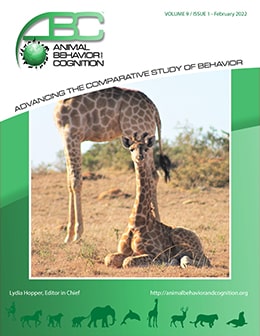Vol 9, Issue 1, February 2022
Characteristics of Social Relationships in a Group of Captive Asian Elephants (Elephas maximus) in the Elephant Village in Thailand
Citation
Yasui, S., & Idani, G. (2022). Characteristics of social relationships in a group of captive Asian elephants (Elephas maximus) in the elephant village in Thailand. Animal Behavior and Cognition, 9(1), 89-105. https://doi.org/10.26451/abc.09.01.08.2022
Abstract
Wild Asian elephants (Elephas maximus) form complex fission–fusion societies centered on matrilineal groups. In captivity, unrelated females remain in the same group and create social relationships. To better understand well-being in captivity, it is important to investigate the social relationships between females. However, to date, little information is available on this topic. The goal of this study was to clarify the social relationships between captive female Asian elephants using social network analysis. Our subjects were 13 captive Asian elephants at the Elephant Study Center in Surin Province, Thailand. We investigated variations in the frequencies of affiliative behaviors between dyads. Individuals that stayed in the group longer tended to play a more central role in terms of group member connections. We found that two individuals played an important role in strengthening connections, and that their removal influenced group cohesion. Our results revealed that individuals that stayed in the group long-term and that had existing relationships with others in the group tended to build better social connections, regardless of their age. In addition, the existence of some young individuals that show frequent affiliative behaviors may be important for bond strength and therefore, overall group cohesion.
Keywords
Asian elephants, Behavior, Social network analysis, Affiliative, Captivity
